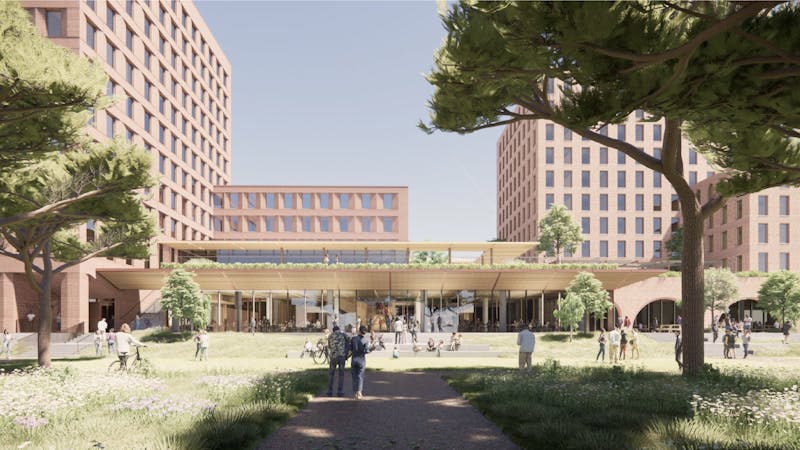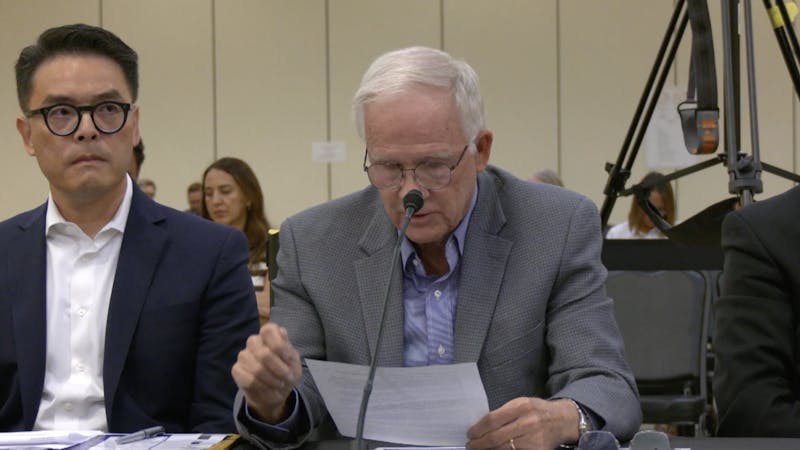50-year plan lays out ambitious developments
We know that the 50-year plan University Architect David Rodd showcased at Monday's Student Association meeting is little more than a contingency plan, but we can't help but express our excitement for some of the plans readied for the university's policy-makers (see story, page 1). It is comforting to know that Rice is looking with wide aspirations toward the first half of the century, and we commend Rodd on an informative and comprehensive speech to the student body.Some students seemed to think that Rodd's presentation incorporated only ideas set in stone, which, thankfully, couldn't be further from the truth. There are too many variables, too many factors, to know what life 50 years from now will entail. Automobiles may be obsolete. The Baylor College of Medicine may be the Rice College of Medicine. Rice football may be Houston's main pigskin attraction. No one can say otherwise. Thus, it is comforting to know that some of these ideas that Rodd has put forth are far from completion and are little more than gestating right now.
For instance, we still have time to discuss with the university the need and desire to maintain our ample green space. Rodd described the campus as bucolic, and we wish it to remain so. Not only is Rice an oasis in a city of steel, glass and smog, but it has also avoided turning into the concrete maze that the University of Texas or Texas A&M University have become. The copious trees, the expansive fields and even the upcoming butterfly garden at the Peter and Nancy Huff House all represent some of the unique vegetational factors that contribute to Rice's personality, and we would be remiss to chip away at their impact on campus life and perception. We readily acknowledge that the university's expansion is inevitable, but we would hope that the university slants future architecture to accentuate the greenness of campus - not merely in Leadership in Energy and Environmental Design, but also in terms of the verdancy of campus.
Likewise, we would like to reaffirm our belief that continued architectural expansion should not stem from the need to impress the aesthetic tastes of prospective students or those of our neighbors. Beautifying the campus should never come at the expense of academics. While we're not saying that we should forgo lawnmowers for more textbooks, we would like to make sure that all future construction serves both academics and aesthetics, not merely the latter.
And when it comes to the physical architecture, we would like to stress an accent on the past. While the Brochstein Pavilion continues to rack up awards - and congratulations are, of course, offered - its discontinuation of Rice's architectural trends has chafed a large swath of the student population. Tudor Fieldhouse and the Humanities building, on the other hand, hearken to Rice's architectural traditions, and as such, fit seamlessly into the university.
There are a few other posited additions that we shy from - putting Main Street underground would heavily disrupt our neighbors, whom we should strive to pacify, and moving the administration from Lovett Hall may preclude prospective students from being awed by Rice's most grandiose building upon first entrance - but, by and large, we look forward to seeing the changes Rice has in store for the next half-century. So long as there is a legitimate student center, complete with a bowling alley, we should be happy.
More from The Rice Thresher

Rice announces Chao College as 12th residential college
Rice announced that the 12th residential college will be named Ting Tsung and Wei Fong Chao College Aug. 19. The college, set to open in fall 2026, will contain nearly 300 on-campus beds.
Dining access fund announced following on-campus unlimited meal swipes
Rice announced new food assistance programs on Tuesday to account for the controversial change in the on-campus meal swipe plan.

Rice disaster prediction model discussed at hearing on deadly Central Texas floods
The House and Senate Select Committees on Disaster Preparedness and Flooding held a hearing on July 31 in Kerrville to address the deadly July 4 flooding in Central Texas. The flooding along the banks of the Guadalupe River killed 108 people, including 37 children. In the charged hearing, Texas lawmakers and flood survivors criticized the local response to the disaster.


Please note All comments are eligible for publication by The Rice Thresher.